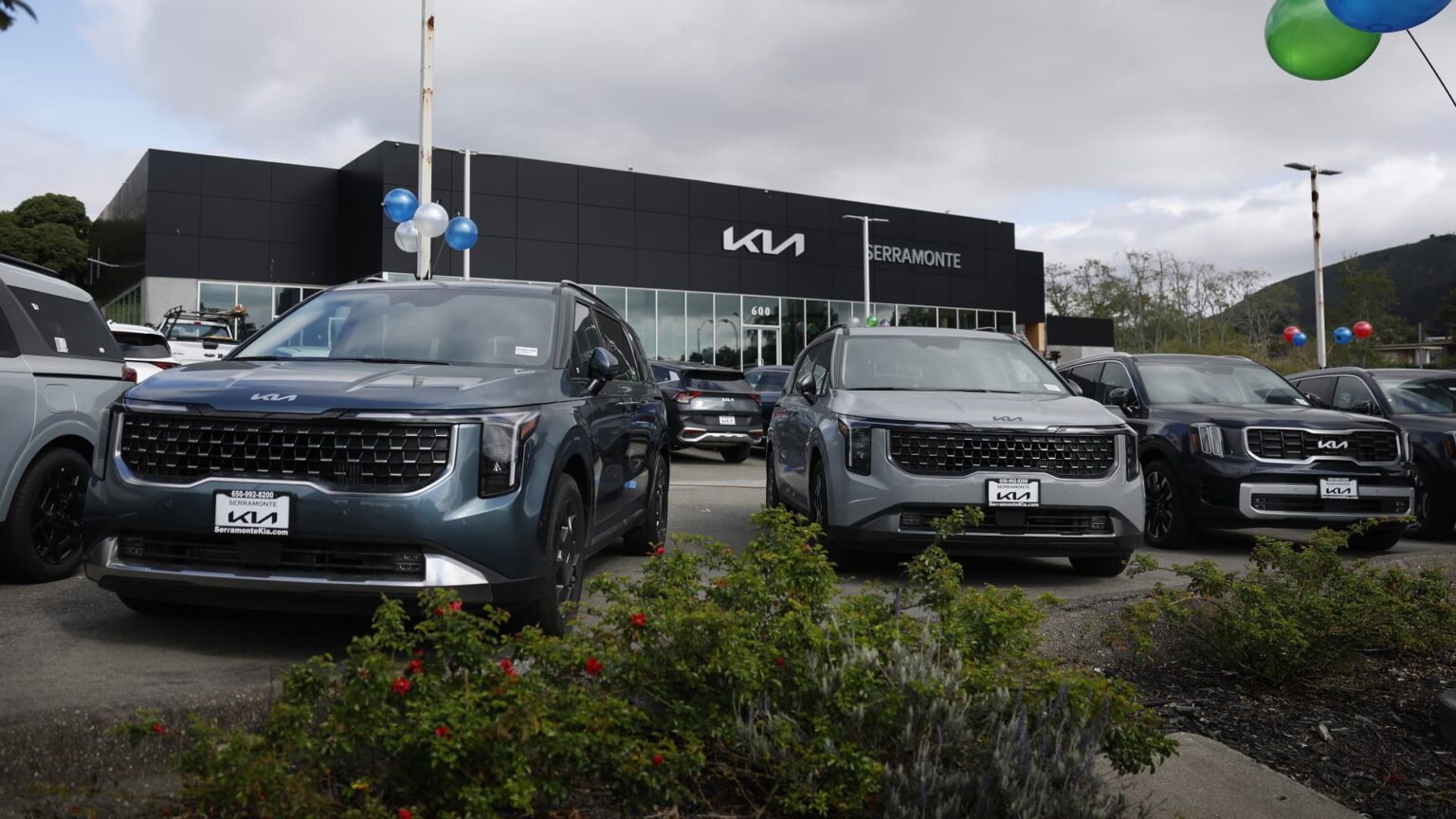Declining Vehicle Supplies Prompt Urgent Consumer Purchases
Photo: Brand new KIA cars displayed at Serramonte Kia, Colma, California. Source: Justin Sullivan | Getty Images
Current Market Dynamics
In the United States, both new and used vehicle inventories are diminishing swiftly, as consumers rush to buy cars and trucks in anticipation of rising prices due to impending tariffs. This trend has been confirmed by auto dealers and market analysts alike.
Recent data from Cox Automotive indicates a significant drop in the days’ supply of new vehicles, declining from 91 days at the start of March to just 70 days this month. The supply of used vehicles, which was already limited, has also decreased from 43 to 39 days.
Consumer Trends and Sales Growth
According to Cox’s chief economist, Jonathan Smoke, heightened consumer activity is partially motivated by the desire to avoid tariffs on imported vehicles. He noted, “The decline in [new] days’ supply was one of the largest drops we’ve seen in several years.” Typically, fluctuations in supply are around five to seven days in a stable market.
New vehicle sales have surged, with an increase of 22% compared to last year’s seasonally adjusted figures and an over 8% rise in year-to-date sales. Similarly, used vehicle sales have shown a sharp increase, with a 7% upswing reported thus far in 2025.
Potential Challenges Ahead
While the rising sales figures seem promising for the automotive sector, there are concerns that growth could stall once automakers and dealers exhaust their current inventory that is free from tariffs.
Telemetry, an auto advisory firm, predicts that production costs and other factors might lead to a decrease of up to 2 million vehicle sales annually in both the U.S. and Canada due to increased pricing.
Industry Adjustments
Automakers and suppliers are likely to shoulder some cost increases, but analysts predict that these will ultimately be passed down to consumers, potentially dampening sales momentum.
In light of upcoming tariffs, many car manufacturers stocked their inventories prior to the implementation of a 25% tariff on imported vehicles, which is now in effect. Some companies have since adjusted their import strategies, with Jaguar Land Rover halting imports altogether, while others like General Motors have ramped up domestic production.
Dealer Perspectives
Ryan Rohrman, CEO of the Rohrman Automotive Group in Indiana, expressed optimism about current business conditions, noting a strong start to April driven by both consumer urgency around tariffs and recent improvements in inventory levels.
Ford and Stellantis have responded to market pressures by providing employee pricing deals, promoting a quicker sales pace. Nick Anderson, a dealership general manager in Missouri, noted this strategy and the heightened consumer awareness of potential price hikes have attracted more price-sensitive buyers, although this has resulted in decreased profit margins.
Anderson commented, “We’re pacing to match or beat last year… Our volume is there, but the gross is down.” He further emphasized that upcoming tariff developments over the next 60 to 90 days will significantly influence future sales trends.
Recent remarks from former President Trump suggested a willingness to support automakers, although details remain unclear.
